If you’re new to sewing, you may notice that your garments seem unprofessional. While there may be several contributing factors, the most common reason is that it lacks structure and support.
Beginners don’t often realize that a garment is not just composed of one type of fabric. Outer fabrics are generally supported by other types of fabrics. Since these fabrics are typically hidden from view, it can be confusing for beginner sewists.
But don’t let that hold you back! Here, we’ll break down the difference between lining, interfacing, interlining, and underlining. By the end, you can tackle your projects with renewed confidence – and enjoy a cleaner, more professional result.
What is Lining?
Whether you’re a dressmaker or a new crafter, you may be familiar with garment lining.
Perhaps the most well-known of the four types, lining refers to the cloth that lines the inside of a garment. It is often made of smooth and lustrous fabric, like cotton and silk. Unlike interfacing, lining can only be attached to the garment by sewing. Lining often uses a different material than that of the outside fabric, for a few different reasons.

Alternatively, lining can also be used to refer to the fabric that goes over the seams of a garment. It is often seen from the outside, so aesthetic is considered when picking out a lining fabric.
A type of lining called facing is used to hide seams on the raw edge of the fabric. Unlike lining, this cannot be seen from the outside, and is only sewn on top of seams. It is generally made from the same fabric as the outer fabric, to ensure it’s hidden. It is often purely functional and not for aesthetic.
What Is It Used For?
Lining is found in many types of garments, and for good reason.
Aesthetic Purposes
The most obvious function of lining is for decorative purposes. Because lining is commonly made of smooth fabrics like silk, it isn’t hard to find silk fabrics that are printed with patterns to serve as lovely embellishments.
You will commonly find lining patterns in coats and jackets. These decorative linings are usually made with a simple color scheme, often following the color scheme of the outer fabric. They also tend to be plainer colors, so as not to attract too much attention to the lining.
Linings with patterns are often paired with outer fabrics that are a plain, solid color, as is the case with jackets and coats. Even in cases where the lining is a solid color, care is taken when choosing the color and quality for aesthetic purposes.
Sliding Over Other Garments
Rather than aesthetic, the functional purpose of lining is to help it slide easier over other garments. This is why lining is commonly made of silk and can be found in almost all coats and jackets. Linings made of silk in coats helps it slide easier over other fabrics, so that you can quickly put it on or take it off.
Added Comfort
Another, less obvious function of lining is for comfort.
Lining is often made of more comfortable material than the outside fabric. Smooth fabrics, for example, feel better against the skin and prevent abrasion with other materials. As a plus, they can provide extra warmth to the wearer.
Linings made of natural fibers also let the skin ‘breathe’, keeping the wearer cool and dry. When using lining, garment makers are free to use more durable (albeit less comfortable) fabrics as the outer layer.
Modesty
For sheer and opaque fabrics, lining can add an important sense of modesty to the garment. Lining opaque fabrics also provides an aesthetically pleasing color contrast between the color of the outer fabric and the inner lining.
Improved Professional Finish
Lining can make a garment more professional. It can help conceal seams and darts, especially in fabrics that are sheer and opaque. Without lining, garments can have a different, displeasing shape.
Remove the lining on one garment and it can hang differently on the body, creating an unflattering silhouette. Lining is also helpful when it comes to tight clothing, preventing it from bunching and sagging in areas of tension.
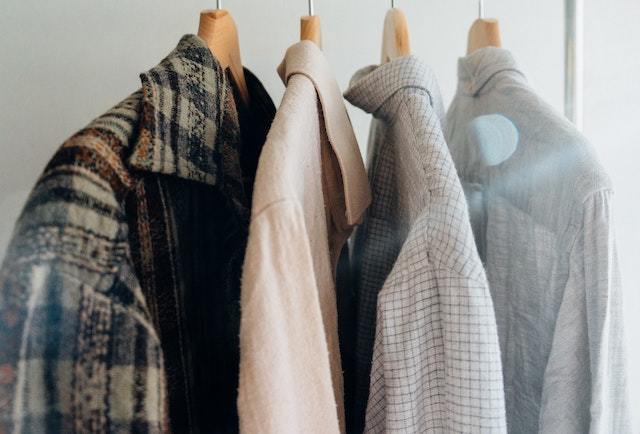
When Is It Used?
Lining is used in many garments, from skirts and trousers to pockets and jackets. You are free to add a lining to most garments, but when do you absolutely have to add it? Here are some conditions to keep in mind:
- Will your garment sit on top of other clothes, like with coats and jackets? Add a lining made of smooth material, like silk or cotton.
- Is your outer fabric made of uncomfortable material, like tweed? Add a soft lining to make the garment comfortable against the skin.
- Is your outer fabric made of sheer or opaque material? You can add a less opaque lining for modesty and functionality.
- Do you need to hide seam finishes and darts? Add a lining to keep these disguised. This is especially useful for fabrics that can make finishing seams difficult, as well as for beginners who may find it hard to finish seams properly.
- Are you using an interlining? You may need to hide this interlining with an extra layer.
- Does it need a pop of color? As Untrained Housewife notes, few people will see it, but it can be fun to add something interesting to your clothes.
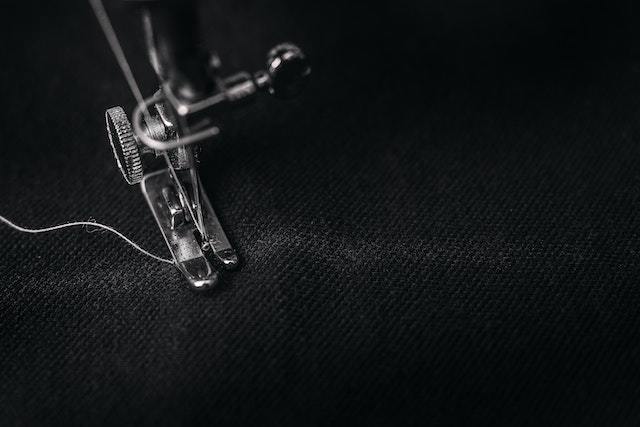
Pros and Cons of Lining
There are many advantages to lining a fabric, from functional purposes to more aesthetic, decorative purposes. The only disadvantage is when garments are made for hotter temperatures.
As a side note, it can also take a bit longer to finish a garment if you want to add lining. While lining can get you out of finishing your seams, therefore saving you time, if you’re unfamiliar with the process, it could be a hassle.
What is Interfacing?
Interfacing fabric is any type of material used to provide support and stability to a garment. It can be categorized depending on how it is attached.
The first type is fusible or iron-on interlining. As the name suggests, iron-on interlining is attached by ironing it onto the back of the fabric. The second type is non-fusible or sew-in interfacing. This type is meant to be sewn into the outer and lining fabrics.
What Is It Used For?
The main purpose of interfacing is to add structure to a fabric. Think of it as a scaffolding to a building. As the scaffolding, interfacing can change the shape of a garment while making the garment more durable.
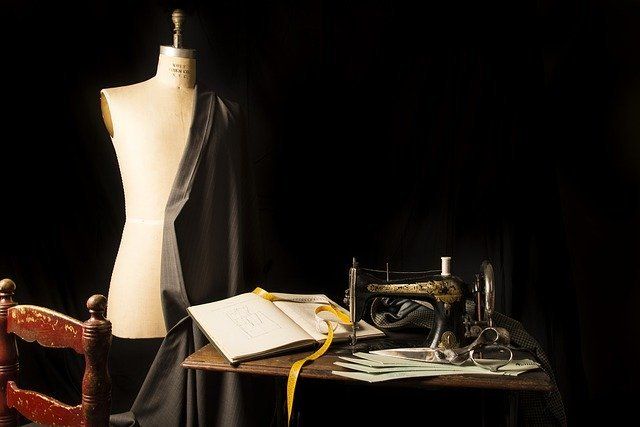
Control Shape
Fabrics often follow the shape of the body, although this shape will change depending on the properties of the fabric and how it is constructed. However, the biggest change to the structure of a fabric is made by using interfacing. The most common example of this is in sewing collars; interfacing gives the collars their shape, so that the fabric stays rigid and upright.
Reinforce Shape
Other than controlling shape, interfacing can also be used to reinforce the shape of a garment. The most common example of this function is in cuffs, reinforcing it so that they do not crease or fold.
Makes Garment Stronger and Durable
Interfacing is also used to make the garment last longer, adding strength and durability to the fabric. A common example of this function is in waistbands and buttonholes. Waistbands and buttonholes often get damaged faster than the rest of the garment, because they are handled more often. Interfacing can lessen this by creating a buffer.
When Is It Used?
Interfacing is used whenever you need to provide additional structure to your garments. It is used in parts of a garment that need reinforcement, like collars and cuffs. Interfacing should be attached to the garment depending on its type. Check out this guide from the Sewing Directory to learn how to attach interfacing to your projects.
Pros and Cons of Interfacing
Interfacing can be helpful when constructing a garment, but not all garments need interfacing. In fact, if you are a beginner, it’s best to try out simpler projects before attempting garments that require interfacing.
When used wrongly, interfacing can make a garment unnecessarily rigid, and therefore uncomfortable for the wearer. Even if a garment will do better with interfacing, it can be hard to apply.
Iron-on interfacing can seem easier than its sew-on counterpart, but you must be careful to avoid creases when applying it. It’s best to practice with scrap fabrics before attaching it onto a finished garment.
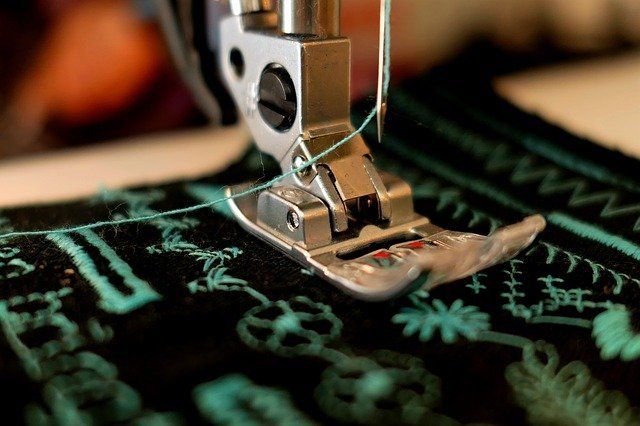
What is Interlining?
If lining is found behind the outer layer of a garment, the interlining is found sandwiched between the lining and outer fabric. It’s often unnoticeable, except to the sewist applying it to their own clothing. Unlike lining, interlining can sometimes be removable. In fact, it is sometimes created separate from the garment and attached to the finished product.
While lining is made with smooth fabrics like silk and cotton, interlining fabric uses rigid materials like canvas flannel and non-woven fabric. In fact, interlining can sometimes be made with interfacing. Interfacing fabric, therefore, can be a type of interlining if it is sandwiched between two other fabrics in a garment. This is why interfacing and interlining is sometimes used interchangeably.
The difference between interlining and interfacing depends on how it is used. Interlining technically refers to any type of fabric in between the outer and lining fabric – whether it’s made of interfacing or not. Interfacing is often used specifically to refer to the woven fabric that makes garments sturdier.
What Is It Used For?
Interlining’s main purpose is to provide warmth to the wearer. That is why some tailors make interlining removable, so the garment is more versatile, allowing it to be functional in both cold and warmer temperatures.
When Is It Used?
Interlining is often used in jackets, coats, and vests. To add interlining to your garments, take the pattern of your garment and cut out the main pieces from your interlining fabric. Then, baste them onto your main fabric and follow the construction of the main pattern. As you sew, trim the interlining from your seams to reduce bulk.
What is Underlining?
Similar to interlining, underlining is sometimes found sandwiched between two fabric layers. Unlike interlining, however, underlining is not meant to be removable. It is a part of the garment itself, and the garment is not complete without it. For this reason, underlining is often found in the entirety of the garment (unlike interlining, which is only found in some parts). This is the main difference between lining and underlining.
For example, lace is often mounted onto a lining fabric. Both fabrics are then treated as one fabric and used to create a garment. Think of underlining as the equivalent of batting in a quilting project.
What Is It Used For?
There are two main purposes for underlining: the first is for warmth, and the second is to change the appearance of the outer fabric.
Warmth
Much like interlining, underlining is often used to add warmth to a garment. Thin and sheer outer fabrics are often underlined with thicker fabrics, so they can hold in more warmth, keeping the wearer comfortable.
Change Drape and Shape
Another purpose of underlining is to change the structure of the outer fabric. Including an underlining can add drape to the fabric, or make it appear firmer. It gives more body to the outer layer, changing how it behaves on the body.
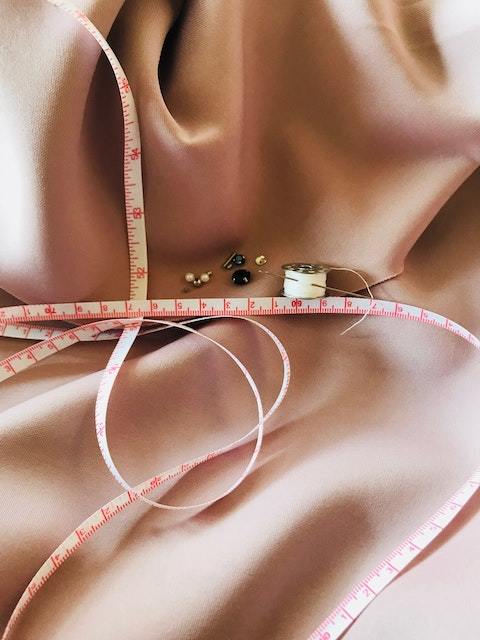
Cons of Underlining
Underlining can be important for many types of garments, especially those that use opaque, sheer, or delicate fabrics.
However, you should be mindful of the outer fabric you are using. Outer fabrics can already be bulky and rigid on their own. Adding an underlining to these fabrics can make them unnecessarily thick, not to mention overly warm. When using rigid fabrics, like tweed, think twice before including an underlining.
Conclusion
Lining, interfacing, interlining, and underlining all refer to fabrics that are used to add structure to a garment. The differences between them can be subtle and confusing, but they all have their own functions – and all of them are equally important to any sewist.
